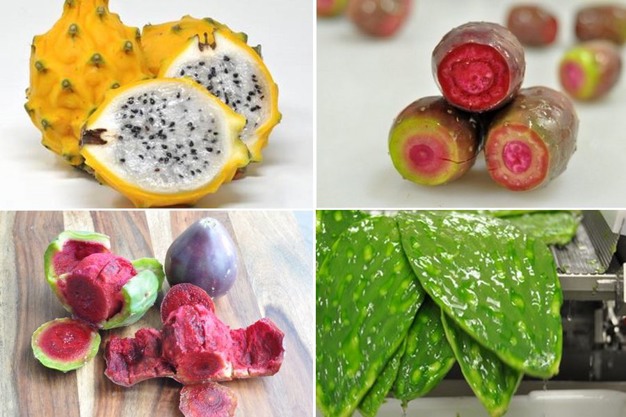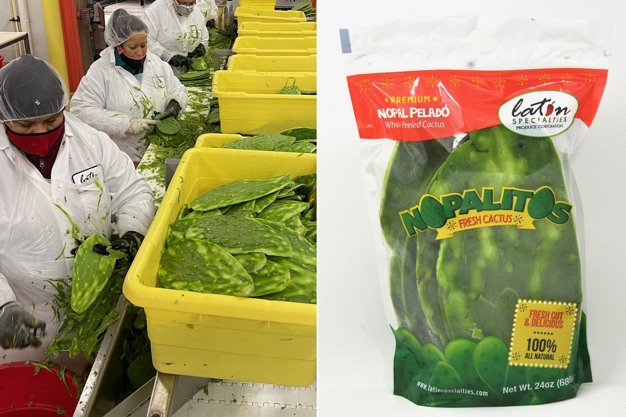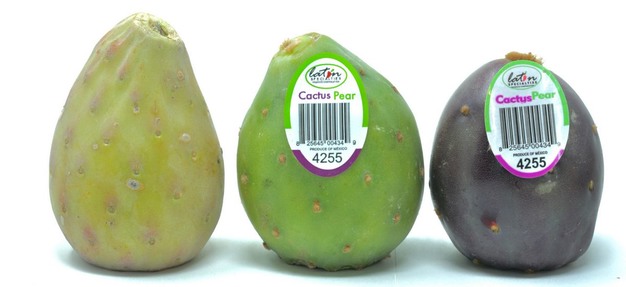 Most products in the cacti family are not very well known. Dragon fruit is probably the exception as it has become a lot more popular in recent years. If consumers were aware of the health benefits of the different cactus products, chances are popularity of these items would grow. "I am very passionate about all products in the cacti family," says Mayra Vazquez with Latin Specialties in Texas. Being a Type 1 Diabetic, she has been studying their nutritional value and has been talking with experts about their health benefits.
Most products in the cacti family are not very well known. Dragon fruit is probably the exception as it has become a lot more popular in recent years. If consumers were aware of the health benefits of the different cactus products, chances are popularity of these items would grow. "I am very passionate about all products in the cacti family," says Mayra Vazquez with Latin Specialties in Texas. Being a Type 1 Diabetic, she has been studying their nutritional value and has been talking with experts about their health benefits.
For Vazquez, cacti have a positive impact on her health. "However, every diabetic is different and not everybody may get the same results," she commented. It is important for more research to be done. Since Mesoamerican times, different medicinal properties have been found in cacti and there are many opportunities to educate consumers on the benefits of food as a medicine. However, medicine still continues to go mostly to medication instead of nutrition. "For consumers, it is challenging to find the diet that works best for them," Vazquez said. "Many consumers run into a wall because there are so many diets out there and which one can you believe to be the best fit?" In this article, Vazquez shares the health benefits of a few different cacti. "I'm a huge advocate for this industry and I am taking this to doctors in Mexico, where T1D is very common, to be researched more."

Members of the cacti family: dragon fruit, cactus pear, Xoconostle and Nopal.
Nopal
The cactus leaf, called Nopal, contains two types of fiber: insoluble fiber remains whole, contributing to the proper functioning of the digestive system, lubricating its interior walls. The second type of fiber, soluble, is part of the cactus leaf's slime and has been found to capture water and help regulate cholesterol and glucose levels in the blood. "The latter has resulted in a drive to continue studying this nutritious vegetable and the benefits it offers to T1D patients," shared Vazquez.

Cactus pear
Another member of the cacti family of products is cactus pear, also called Tuna. It is a sweet fruit and in terms of nutritional value, it is comparable to the vitamin C levels in an apple or an orange. It reduces sugars such as glucose and fructose, giving it its caloric value. "For me, this fruit affects my Type 1 Diabetes differently than other fruits in the market," Vazquez shared. "My glucose level increases at a slower rate, unlike other starchy fruits and vegetables that spike my glucose levels uncontrollably."
Xoconostle
Xoconostle is another cactus product that is commonly used to cook but it's also suitable for juices. "This fascinating fruit is not easily found here in the U.S. as the production in Mexico is minimal compared to the Nopal and the Tunas. It helps control glucose levels, and the high protein content and vitamin C levels make this fruit very nutritious," she said. "Its nutritional value seems to be a combination of Nopal and Tuna." Xoconostle has a slight tangy taste and just like all other fruits within the family of cacti, it is a power fruit.
While cacti contain many health benefits, Vazquez recommends retailers to fully understand the products as there are over 50 varieties of cactus that are used for different applications. "It is important to understand the differences to be able to merchandise the right variety for the customer to enjoy," she said.

Left: Xoconostle versus Cactus Pear in the middle and at the right.
Declining consumption
Unfortunately, consumption of Nopal is showing a decline. Consumption still remains higher in Latin America, especially Mexico, while in the U.S., it is mostly first- and second-generation Hispanic consumers that eat them. "The newer generations just aren't interested due to the consistency/mucilage. We are one of the largest processors of cacti in the U.S., but the demand has diminished," Vazquez commented. As a result, the company is looking at different applications, including smoothies, juices, jellies, dehydrated products, and other value-added alternatives. Despite the decrease in consumption, there still seems to be a higher demand during Lent as this product serves as a meat replacement for practicing Catholics.
The decline in consumption certainly isn't caused by pricing as one of the benefits of cactus products is their affordability. "The health benefits of these nutritious products are worth exploring how to increase consumption to live a healthier life."
 For more information:
For more information:
Mayra Vazquez
Latin Specialties
Tel: +1 713-986-3862
[email protected]
www.latinspecialties.com
